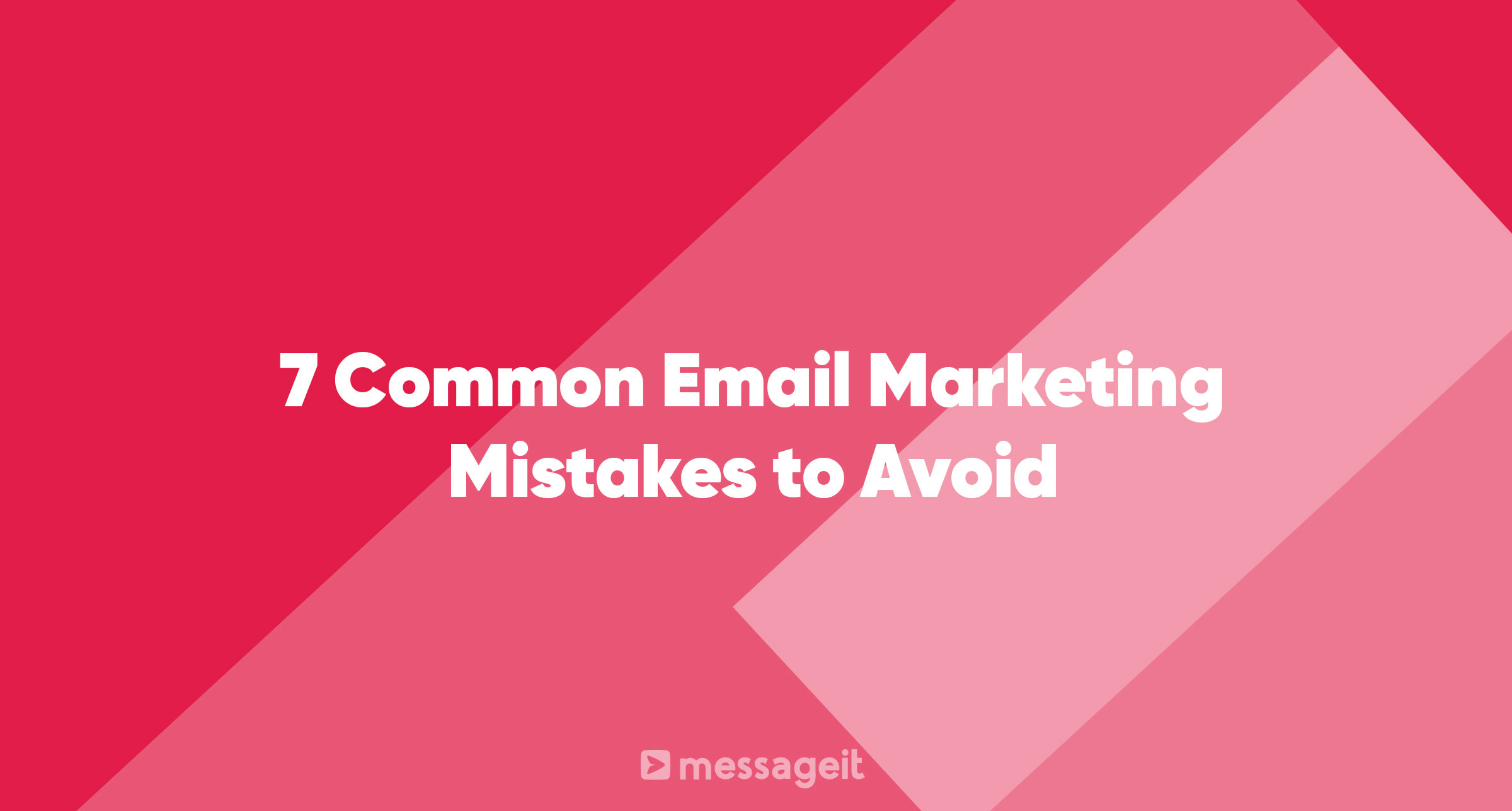Email marketing is a powerful tool used by businesses worldwide to connect with their audience, build customer relationships, and drive conversions. However, it's a double-edged sword. When done right, it can generate significant return on investment (ROI); when done poorly, it can lead to decreased engagement, unsubscribes, and even damage to your brand's reputation. Here are seven common email marketing mistakes to avoid for effective campaigns:
1. Not Defining Your Target Audience
Understanding Your Audience
One of the first things you need to do when planning an email marketing strategy is to define your target audience. This involves understanding their demographics, interests, preferences, and behaviors. It's a crucial step that many businesses overlook, leading to generic emails that do not resonate with the recipients and fail to drive engagement.
Segmenting Your Audience
After defining your target audience, the next step is to segment them into smaller groups based on shared characteristics. This allows you to send more personalized and relevant emails, leading to higher engagement rates. Whether you segment your audience based on their demographics, purchase history, email engagement, or other data, the goal is to send emails that cater to the specific needs and interests of each group.
2. Neglecting Email Design and Copy
Importance of Good Design and Copy
The design and copy of your emails play a significant role in their effectiveness. Emails that are poorly designed or have confusing copy can be hard to read and may not convey your message effectively. They can also look unprofessional, damaging your brand's perception in the eyes of your subscribers.
Mobile Optimization
With the majority of people checking their emails on mobile devices, it's crucial to ensure your emails are optimized for mobile viewing. This includes using a responsive design that adjusts to different screen sizes, using fonts that are easy to read on small screens, and keeping your emails concise.
Clear Calls to Action
Your emails should have a clear purpose, and that purpose should be evident in your call to action (CTA). Whether you want your subscribers to make a purchase, read a blog post, or follow you on social media, make sure your CTA is prominent and compelling.
3. Ignoring Analytics
The Role of Analytics
Analytics play a vital role in email marketing. They provide insights into your email campaign's performance, allowing you to understand what's working and what's not. By monitoring key metrics such as open rates, click-through rates, and unsubscribe rates, you can make data-driven decisions to improve your future campaigns.
A/B Testing
A/B testing is a powerful tool in email marketing. It involves testing two versions of an email to see which one performs better. By testing different elements such as subject lines, email copy, images, and CTAs, you can continuously optimize your emails for better results.
4. Overlooking Personalization
The Power of Personalization
Personalization is a key ingredient in successful email marketing. Personalized emails are more likely to be opened, read, and clicked on compared to generic ones. This can be as simple as addressing the recipient by their first name or as complex as sending product recommendations based on their browsing history.
Behavioral Email Marketing
One way to take personalization to the next level is through behavioral email marketing. This involves sending emails based on the recipient's behavior, such as their past purchases, website activity, or email engagement. It's a powerful way to send highly relevant emails that resonate with your audience.
5. Failing to Comply with Email Marketing Laws
Understanding Email Marketing Laws
Email marketing is governed by laws and regulations, such as the CAN-SPAM Act in the U.S. and the General Data Protection Regulation (GDPR) in the EU. These laws set rules for things like obtaining consent to send emails, providing a clear unsubscribe option, and more.
The Consequences of Non-compliance
Failing to comply with email marketing laws can lead to severe penalties, including hefty fines. It can also damage your reputation and lead to a loss of trust among your subscribers. Therefore, it's crucial to understand and comply with all applicable laws and regulations.
6. Sending Emails at the Wrong Time
The Importance of Timing
The timing of your emails can significantly affect their open and click-through rates. While the best time to send emails can vary depending on your audience and industry, general best practices suggest that weekdays during working hours tend to yield the best results.
Testing Different Send Times
It's a good idea to experiment with different send times to see what works best for your audience. You can do this by splitting your email list and sending the same email at different times, then comparing the results.
7. Neglecting to Clean Your Email List
The Need for Regular List Cleaning
Over time, your email list can become cluttered with inactive subscribers, incorrect email addresses, and other issues that can negatively impact your email marketing performance. Regularly cleaning your email list can improve your deliverability, open rates, and overall ROI.
How to Clean Your Email List
Cleaning your email list involves removing inactive subscribers, correcting invalid email addresses, and segmenting your list for better targeting. There are various tools available that can automate this process, making it easier and more efficient.
In conclusion, while email marketing can be a highly effective marketing tool, it's crucial to avoid these common mistakes. By defining your target audience, creating engaging emails, monitoring your analytics, personalizing your emails, complying with laws, sending emails at the right time, and maintaining a clean email list, you can optimize your email marketing campaigns for success.
